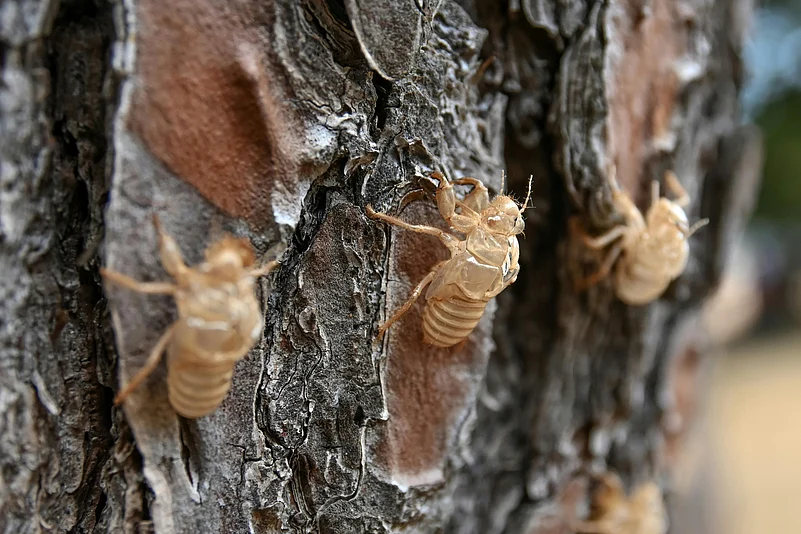Cicadas have started popping out of the soil in the Chicago area and across Illinois, marking the long-awaited return of these fascinating insects. For the first time in 17 years, trillions of periodical cicadas are emerging, offering a spectacle that is both captivating and a bit unsettling for some.
Here are some answers to common questions and key facts to help you understand and appreciate the cicada phenomenon.
1. Cicada Types And Life Cycles
Illinois is home to both annual and periodical cicadas. The annual cicadas appear every year, while the periodical cicadas emerge in massive numbers every 13 or 17 years. This year, the spotlight is on the periodical cicadas, which have been living underground for the past 17 years, feeding on tree roots and biding their time until their synchronised emergence.
2. Why Are Cicadas So Loud?
Cicadas produce their distinctive sound using a corrugated exoskeletal structure in their thorax called a tymbal. This organ, specialised for sound production, functions similarly to a rattlesnake's rattle, though without any threatening intent. Only male cicadas make this noise to attract females. They create these sounds by contracting muscles to deform their ribs inward, which then snap back, repeating this motion rapidly.
According to Derke Hughes of the Naval Undersea Warfare Centre, if humans had a similar structure, it would involve muscles on either side of the torso that could collapse the chest inward dramatically, reported CBS news. This biological feature allows cicadas to produce sounds reaching up to 100 decibels, comparable to a lawnmower.
3. How Long Do Cicadas Live?
Cicadas spend the majority of their lives underground, emerging only at the end of a 13- or 17-year cycle to reproduce. Males begin buzzing loudly to attract females about four to five days after emerging. Female cicadas, in turn, signal their interest by flicking their wings.
Ken Johnson of the University of Illinois notes that female cicadas can lay 500 to 600 eggs in tree branches. The eggs hatch about six weeks later, and the nymphs fall to the ground and burrow in, starting the cycle anew. The adult cicadas, however, die shortly after the mating process, with their above-ground life lasting only about a month.
4. What Animals Eat Cicadas?
Cicadas provide a feast for many animals, including birds, mammals, and other insects. For pet owners concerned about their furry friends, Dr. Cynthia Gonzalez of Family Pet Animal Hospital in Lincoln Park reassures that cicadas are not toxic to pets and do not sting or bite.
The only issue might arise if pets ingest large amounts, particularly the exoskeleton, which can irritate their gastrointestinal tract.
5. Managing The Invasion
While cicadas are generally harmless to humans and pets, they can cause damage to young trees during egg-laying. Homeowners can protect vulnerable plants with netting or delay planting new trees until the cicada season is over.
This cicada emergence is a rare and fascinating event, offering a glimpse into nature's intricate rhythms. Whether you're intrigued by their unique life cycle or captivated by their song, the cicadas of Illinois are a reminder of the wonders of the natural world.




























